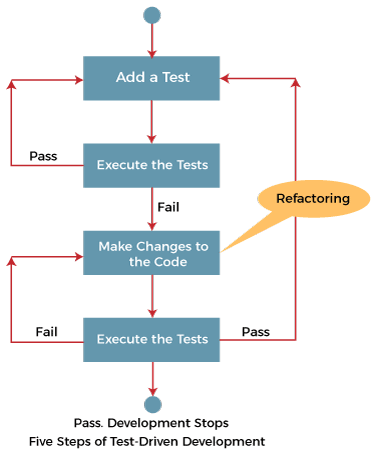TDD JavaWhat is TDD?Test-driven development, or TDD for short, is a software development process. As the name implies, involves utilizing tests to guide application development, resulting in simple, iterative implementation with good test coverage right from the start. Test-Driven Designing and building tests for each single function of an application is the first step in development. Only when an automated test fails, the TDD framework tell developers to write new code. It prevents code duplication. It is based on the simple principle of developing and correcting failed tests before writing new code (before development). We write a tiny piece of code at a time to pass tests, therefore it helps the developer to minimize duplicate code. Tests are nothing more than requirements that must be tested in order to be met. It is a method of creating and executing automated tests prior to the application's real development. As a result, Test First Development is also known as TDD. How to Conduct a TDD Test?The instructions below outline how to conduct a TDD test.

The TDD cycle identifies
Clarifications about TDD
Traditional Testing vs. TDDThe primary distinction between test driven development and traditional testing is as follows:
Conventions for NamingNaming conventions aid in the organization of tests, making it easier for developers to discover what they need. Another advantage is that many tools assume certain conventions will be followed. There are many different naming conventions in use, and the ones listed here are just a few. Any naming standard is preferable to none, according to logic. The most important thing is that everyone on the team understands and is comfortable with the norms. Choosing "more popular" conventions has the advantage of allowing newcomers to the team to quickly get up to speed by using existing expertise.
Next Topic#
|
 For Videos Join Our Youtube Channel: Join Now
For Videos Join Our Youtube Channel: Join Now
Feedback
- Send your Feedback to [email protected]
Help Others, Please Share










